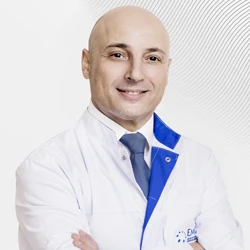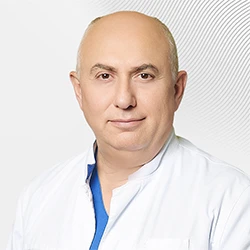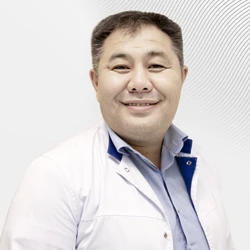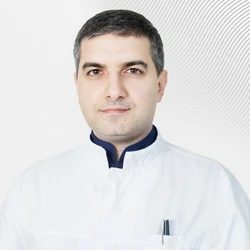Aesthetic proctology
Many patients experience discomfort associated with the appearance of the anal area, with the appearance of formations of the perianal area ("polyps", "bumps", "tails", "folds", "bumps", etc.). This is usually not customary to talk about, and many live with such problems out of habit for many years.
However, firstly, these complaints may conceal not only cosmetic problems, but also much more serious diseases. Secondly, getting rid of aesthetic problems is much easier than it seems. Therefore, any discomfort in the anus is a reason to go to a proctologist for an examination.
The appointment of a proctologist in our clinic is as comfortable and delicate as possible: you tell the doctor about the problem, what exactly is bothering you, when the complaints appeared, and other important details. If you are not ready for an examination at the time, then the initial consultation may be limited to a conversation, but you need to understand that an examination is necessary to establish a diagnosis and determine treatment tactics. For examination, the patient changes clothes in a separate enclosed area, special underwear is provided for greater comfort, allowing the doctor to examine only the problem area. The examination takes place on a chair similar to a gynecological one. After an external examination, a finger examination of the rectum is performed with an anesthetic (analgesic) gel, regardless of whether the pain is bothering you or not. If an instrumental examination is necessary, it may require the preparation and conduct of a study on another day. If necessary, the patient is advised by doctors of related specialties – gynecologist and dermatologist.
In cases where additional examination is not required to establish a diagnosis, the doctor will suggest possible treatment options.
One of the most common "aesthetic" diagnoses in proctology is residual hemorrhoidal skin marks - perianal fringes. They form in the anal area and can complicate the hygiene process, cause discomfort when wearing underwear, a feeling of shame and awkwardness in moments of intimacy. This problem does not threaten your health and is most often just a cosmetic defect that is easy to get rid of. The fringe removal procedure can be performed on the day of treatment or on any other day convenient for the patient. It is performed on an outpatient basis (in a doctor's office, under anesthesia), with an electroscalpel (monopolar), which usually does not require additional wound suturing. After such manipulation, the patient can immediately go home. A repeat appointment is usually scheduled for 5-7 days. Full recovery usually occurs on 10-12 days.
Remember, it's up to you to decide whether to get treatment now or postpone treatment.
Make an appointment for a consultation and we will contact you for more details
Why the EMC
The first and only clinic in Russia, created in the image of the world's leading clinics
EMC is a multidisciplinary center offering patients a high level of medical services and a personalized approach
600
world-renowned doctors
57
treatment directions
36
years take care of your health
24/7
we work at any convenient time
Worldwide recognition and awards
Our achievements have been confirmed by prestigious international awards
 Learn more
Learn more
Worldwide recognition and awards
We work according to international standards, we have licenses and certificates
 Certificates and licenses
Certificates and licenses
Make an appointment for a consultation
Specify your contacts and we will contact you to clarify the details
Reviews
Anonymous,
City: -
Very good experience of visiting clinic. Dr. Kirzhinov
I had very good experience of visiting clinic. Dr. Kirzhinov is very professional,
gave me a very good treatment and solved a problem. Also I want to thank assistant Ayrat. He explained everything well and accompanied me during my whole visit, he helped me a lot
Clinic:
Dental Clinic
Doctor:
Kirzhinov Islam
5 October 2025
Anonymous,
City: -
The team worked very smoothly
The room was perfectly prepared and all materials already available for
me. The team worked very smoothly and everything proceeded according to plan. Many thanks for a consistently professional operation carried out perfectly.
Anonymous,
City: -
Everything is great!
Everything is great! I enjoyed the appointment. The doctor did a great
job
Clinic:
Clinic of dermatology, venereology, allergology and immunology
Doctor:
Vardanyan Karine
29 September 2025
Anonymous,
City: -
God bless you all
I appreciate all your wonderful and willing to help staff. God bless you
all
Anonymous,
City: -
As always professional and human!
My sentiments of appreciation to Dr. Levkina and her teams. As always professional
and human!
Clinic:
Ophthalmology Clinic
Doctor:
Oksana Levkina
30 June 2025
Anonymous,
City: -
I reiterate my gratitud
I reiterate my gratitud for the kindness and excelent professional services
of Dr. Oxana Levkina and her team.
Doctor:
Oksana Levkina
17 May 2025
Anonymous,
City: -
I feel much better now
Thank you so much for all doctors , nurses, helpers for helping me when
i got hospitalized 3 weeks ago. I feel much better now.
Anonymous,
City: -
Thanks to Dr. Oxana Levkina
Thanks to Dr. Oxana Levkina and her teams. Excellent as always.
Clinic:
Ophthalmology Clinic
Doctor:
Oksana Levkina
28 April 2025
Mirza petrus Auraha,
City: -
Many thanks to all medical staff and especially Dr. Alexey Afanasyev
Many thanks to all medical staff and especially Dr. Alexey Afanasyev for
the professional treatment. This was my second visit, in 2015 I had a successful knee surgery done in ECSTO. Thank you and best regards, Mirza Petrus Auraha
Doctor:
Afanasiev Aleksey
23 April 2025
Patricia,
City: -
Excellent care
I am very grateful to Evgeniya Kondrashova for her excellent care while
I was a patient in the hospital.Throughout my stay she monitored and cared for me with noteworthy professionalism and was readily available if I had questions or needed reassurance.
Clinic:
Cardiovascular Diseases Clinic
Doctor:
Kondrashova Evgeniya
7 April 2025
Patricia Johnston,
City: -
Highly recommended
I recently had a cardioverter defibrillator implanted by EMC surgeon-arrythmologist
Dr Oleg Evgenievich Sukhorukov. I spent five days in the hospital and I cannot praise this wonderful Doctor enough for the skill, care and attention he provided. I can confidently recommend him and
the excellent team of cardiologists. They are thoroughly professional, immensely skilled and dedicated to producing the best outcome for their patients.
... more
Clinic:
Cardiovascular Diseases Clinic
Doctor:
Suchorukov Oleg
6 April 2025
Аnonymous,
City: -
Thanks very much to Dr. Oxana Levkina
Thanks very much to Dr. Oxana Levkina. As always professional and human.
Clinic:
Dental Clinic
Doctor:
Oksana Levkina
26 March 2025
Anonymous user Name,
City: -
I wish you all good health and professional success
Many thanks to the doctors Moskalets E. R. and Penkova O. V., who described
my pictures on the day of the study, as well as to the staff of the PET CT department Nikolay, nurse Ekaterina, laboratory assistants Eduard and Nikolay, who were with me from the beginning and until the
end of the study, we worked in a coordinated, professional and friendly manner.
... more
Clinic:
Institute of Oncology
Doctor:
Elina Moskalets
26 March 2025
Аnonymous,
City: -
My child was in the very best hands
From the cloakroom attendant to the doctors— we felt warmly welcome.
We had a close supervision by the assistants. And the doctors took plenty of time for the patient and examined utmost empathetic.
A.V.,
City: -
I would like to express my deep gratitude to Alexey Vasilyevich Kovalenko
I would like to express my deep gratitude to Alexey Vasilyevich Kovalenko
for his high professionalism, high efficiency and sensitive attitude to patients. The doctor performed the most difficult operation for me, and at all stages of preoperative preparation During my
postoperative rehabilitation, I felt his professional and emotional support.I very much hope that the EMC management appreciates such highly professional specialists as A. V. Kovalenko, and my highly positive feedback on his work will be taken into account when determining his KPIs.
... more
Clinic:
Urology Clinic
Doctor:
Aleksey Kovalenko
19 March 2025
Konstantin Vladimirovich,
City: -
I express my gratitude for the treatment!
He came back with severe pain in the neck. The diagnosis revealed an intervertebral
hernia. The very next day, the operation was carried out, everything was very fast. After the operation, he was surrounded by nurses. I would especially like to express my gratitude to:
Krivoshapkin Alexey Leonidovich, Yulia Markina, Vladimir Klimov, Orkhan Abdullayev, Gleb Sergeevich Sergeev, and Alexander Loginov.
... more
Clinic:
Institute of Oncology , Neurosurgery Clinic
Doctor:
Krivoshapkin Alexey
16 March 2025
Anonymous,
City: -
Thanks to Dr. N. Samokhina
All consultations and prescribed treatment are always positive.
Clinic:
Ophthalmology Clinic
Doctor:
Samokhina Nadejda
15 March 2025
Аnonymous,
City: -
Thanks to dr. Oxana Lepkkina
Her colleagues and her teams. As always, perfect.
Doctor:
Oksana Levkina
10 March 2025
Vladimir Georgievich,
City: -
Many thanks to Dr. Samokhina Nadezhda Ildarovna!
She is the most reliable ambulance for our family, which has helped out
in critical situations more than once. At the same time, Nadezhda Ildarovna is distinguished by her great friendliness and ability to calm the patient and not get depressed.
Clinic:
Ophthalmology Clinic
Doctor:
Samokhina Nadejda
10 March 2025
Anonymous user Name,
City: -
We thank all the staff of the clinic for saving our lives
We thank Alexey Leonidovich Krivoshapkin, Alexey Sergeevich Gaitan, Orkhan
Abdullayev and all the clinic staff for saving our lives.
Clinic:
Institute of Oncology , Neurosurgery Clinic
Doctor:
Krivoshapkin Alexey
7 March 2025












.webp)

.webp)




